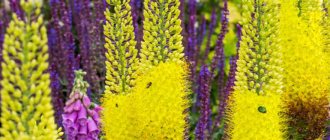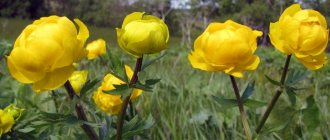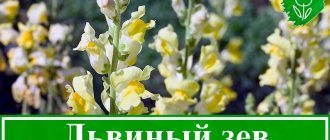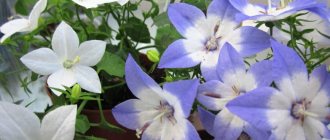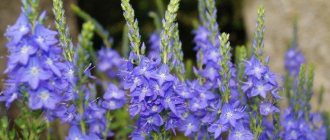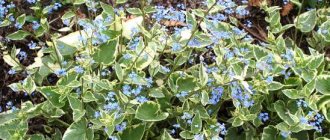Eremurus or Shiryash is a perennial plant that belongs to the Asphodelaceae subfamily of the Xanthorrhoeaceae family. The genus contains about 60 species. Translated from Latin, the name of the perennial means “Desert Tail”.
“Shirish, shiryash or shrysh” were assigned for the ability of the roots of some eremurus to produce gum arabic glue. The plant was first described in 1773 by the Russian explorer and traveler P. Pallas. The first hybrids were bred at the beginning of the twentieth century and work is still underway to propagate varieties of this plant.
Description and features of Eremurus
The rhizome is branched, similar to a spider or sea anemone, and has a large diameter. Numerous leaves are linear, triangular, the names of the species are distinguished by their habit.
Eremurus is an excellent honey plant that attracts insects with its loose inflorescence of orange or red shades already in early June. Most often, flowers of varietal forms and hybrids are found on sale.
Types and varieties of Eremurus
| Type / Variety | Height/Description | Flowers |
| Altaic | 1.5 m. Flower stems are directed at an acute angle. | Green-yellow. |
| Alberta | Loose peduncle 60 cm high. | Gray. |
| Bunge or narrow-leaved | 2 m. The leaves are narrow, bluish in color, the inflorescence is composed of small flowers, 60 cm. | Golden. |
| Bukhara | Peduncle 1.3 m, pear-shaped seed capsule. | White or pale pink. |
| Himalayan | 2 m. Inflorescence 80 cm. | White, covered with green stripes. |
| Wonderful | 1.5 m. Narrow leaves with three edges. | Yellowish. |
| Kaufman | Leaves with white pubescence, inflorescence 70 cm, diameter 7 cm. | White with a creamy tint and a bright yellow center. |
| Korzhinsky | Peduncle 50 cm. | Yellow-red. |
| Short-stamened | Inflorescence 60 cm. | Pale pink thickened, short. |
| Crimean | 1.5 m. | White. |
| Milky-flowered | 1.5 m. Long flowering without petal fall, leaves with a slight bluish bloom. | Whitish. |
| Powerful or robustus | 2 m. Peduncle 1.2 m. | Light pink or white. |
| Olga | 1.5 m. Leaves are bluish in color, inflorescence 50 cm. | Pinkish or white. |
| Tubergen | Dense peduncle. | Gray-yellow. |
| Achison | 1.7 m. Earliest flowering among the species. | White and pink. |
Thanks to numerous breeding works, hybrid species of Eremurus of various colors have been bred. Ruiter hybrids are mainly sold on the Russian market.
| View | Flowers |
| Cleopatra or Cleopatra's needle | Pink. |
| Money maker | Yellow. |
| Obelisk | Snow white |
| Odessa | Yellow with a greenish tint. |
| Romance | Pinkish pastel. |
| Sahara | Coral pink with dark purple veins. |
Eremurus (liatris) is white, but it belongs to the Asteraceae family.
Eremurus: planting and care
Eremurus is easy to care for and reproduces well with proper attention.
Planting Eremurus in open ground
Flowers are planted in a permanent flowerbed in late September-early October. Choose bright places with good drainage, which can be broken brick, expanded clay, pebbles and similar materials.
The place is prepared in advance. A drainage layer 5 cm high is sprinkled with a small layer of soil consisting of compost and turf soil. With the roots spread out, the seedlings are placed on it and covered with soil. The planting depth of the rhizome is 5-7 cm, the planting hole is 25-30 cm, between plants is 30 cm. Everything is well watered.
An important condition for rapid flowering is limited fertilization of seedlings. With abundant nutrition, they increase the green mass to the detriment of the formation of flower buds.
When planting purchased rhizomes, a distance of 40-50 cm is left between the divisions for large ones, 25-30 cm for small ones, the row spacing is set to about 70 cm. After this, the soil is well soaked.
Caring for Eremurus in the garden
The plant is unpretentious to grow. In early spring, the flowers are freed from shelter, then complex fertilizer (40-60 g) and 5-7 kg of rotted manure or compost per square meter are used as fertilizing. Before flowering, which occurs in June, the plant is well watered.
If the soils are poor, in May they are additionally fed with nitrogen fertilizer (20 g per sq.m.). Once flowering is complete, there is no need for moisture. If the summer is rainy and the ground is wet, watering is excluded. During the season, the soil is regularly loosened and weeded.
At the end of flowering, the bushes are dug up and left in a well-ventilated area for at least 20 days to protect them from rotting in moist soil. If it is not possible to dig, then a protection like an umbrella is placed over the flowers to prevent moisture from entering.
In autumn, a phosphorus fertilizer mixture is applied to the plantings in an amount of 25 g per square meter.
Dried roots should not be left until spring. They must be planted in the soil in the fall. The winter hardiness of the plant is very good, but before frosts, Eremurus are covered with fallen dry leaves and peat for better preservation. In the absence of snow, it is good to cover with spruce branches.
Diseases
If only the lower part of the plant curls and dries out, this may indicate the natural process of old leaves dying off. Well, if they have darkened and dried out, then you should start worrying. Begonia Cleopatra, unfortunately, is susceptible to a disease typical of most species, such as fungal infection. It appears as rotten spots on the leaves.
If it happens that your plant is sick, then the infected areas need to be removed, and the remaining part should be quickly treated with a fungicidal preparation. To prevent fungal infection, you need to maintain the correct temperature conditions, and then the plant will not get sick. What other difficulties there are in growing begonias, we will consider below:
- With abundant watering and dry air, the leaves of the plant will quickly turn yellow.
- The appearance of brown spots means a lack of nutrients.
- The flower grows poorly and does not bloom, which means there is a lack of potassium and phosphorus.
But if you take good care of the plant and adhere to the rules of growing a flower, then begonia will delight you with abundant flowering and thick leaves.
Reproduction of Eremurus
Flower division is carried out when new ones grow next to the planted rosette and they are well separated. If this is difficult, reproduction is postponed until the next season.
The place where the rosette divides is cut so that it and the main one each have several roots. Then the sections are sprinkled with ash to prevent rotting. The whole family is transplanted into the ground as a bush until next year.
When each division grows roots and buds form, the bush can be divided into separate ones. Such division of plants is possible once every 5-6 years.
Propagation from seeds
Sowing seeds directly into the ground is not a very good option. It is more reliable to grow by sowing in seedlings and then replanting.
At the end of September and beginning of October, pots about 12 cm high are filled with loose soil. Each seed is laid out to a depth of 1 cm, then kept at a temperature of +14...+16 °C. Germination can take 2-3 years. The top layer of soil should always be slightly damp.
In the first years, seedlings are not planted in open ground; they are left in the same pots to grow and strengthen. They are kept in a well-lit place, and when the leaves dry out, they are removed into the shade.
Water the seedlings so that the soil is always slightly moist. When it gets cold, pots with seedlings are wrapped with sawdust, spruce branches, dry leaves, and more recently with covering material. When the bush gets stronger and becomes large enough, it is transplanted into the soil. Plants grown from seeds bloom only after 4-7 years.
Desert luxury of incomparable inflorescences
Eremurus received the botanical name in honor of its long, luxurious, long inflorescences that look especially impressive in desert areas even from a considerable distance (from the Greek 'eremos' and 'ura' - “tail of the desert”). The popular names of Eremurus are much less poetic than its official name. Shiryash or shrish comes from the Tajik and Kazakh word for “glue,” indicating the sticky substances contained in the roots with unique properties. Despite the fact that Eremurus is an edible plant (young roots and leaves of some species are eaten as a vegetable), as well as a source of natural yellow-ocher dyes, it is considered primarily as an ornamental plant. The majestic beauty of the fluffy huge vertical inflorescences gave it an equally beautiful nickname - Cleopatra’s needle.
Eremurus are powerful herbaceous perennials that form very large rhizomes. The spindle-shaped, tuberous, thickened Cornedone Eremurus with buds on the upper side is difficult to confuse with any other garden plant. Their maximum diameter reaches 15 cm. In addition to the Cornedone, Eremurus also forms a powerful system of feeding spindle-shaped or cord-shaped thick roots (up to 30 pcs), extending almost horizontally from the bottom, and a network of thin feeding long roots (thickened roots - up to 15 cm in length, thin – up to 1 m). When selling, especially imported plants, the roots are often shortened, but then the plant grows a full-fledged root system. Cornedonze constantly grows upward, the lower part with old roots dies off annually after a period of summer dormancy, and new storage roots grow in the upper part.
The plant forms dense “bundles” of basal leaves collected in rosettes. Long and linear, very beautiful, triangular or keeled, the leaves of the plant look great in any decorative composition, immediately giving the impression of an exotic and bright plant. Erect leaves, as if fanning out from the center of the bush, with strongly pointed tips, add graphicness and severity to the plant.
Eremurus develop quite specifically: in the summer, “out of habit”, inherited from their wild ancestors, they enter a summer period of rest, during which the above-ground part dies off completely or partially. Not all species wake up in the fall; some Eremurus form buds and roots in the spring, and in the fall they completely leave the garden scene until the next season.
Eremurus's status as a beautifully flowering plant is undeniable. Despite their rather attractive foliage, Eremurus are valued primarily for their flowering. Huge, half a meter or more long, openwork cylinders on the slender peduncle of this crop are the largest and most striking of all garden crops with a similar elongated type of candle-shaped inflorescences.
Eremurus himalaicus
Sultan inflorescences of Eremurus are capable of bewitching with their fluffy effect, bright colors and tenderness. Tall, elongated, cone-shaped or cylindrical inflorescences are crowned with straight peduncles almost up to 2 m high, impressively rising above a rosette of beautiful leaves. Eremurus peduncles are very simple and strong, most often they are quite thin. The shape and beauty of individual flowers can only be seen close up, but the cylindrical elongated inflorescence - an erect raceme - can be seen even at a very great distance. The length of the inflorescences ranges from 15 cm to almost 1 m.
The flowers in the raceme are arranged in a spiral, on short or elongated pedicels. The flowers of all Eremurus are bell-shaped, most are wide open, with a large and striking, most often lanceolate or triangular bract. The flower boasts an elegant perianth with six leaflets decorated with colored veins, which outwardly appear to be typical petals, and six stamens with thin filaments and swaying anthers. Most often, the filaments are longer than the perianth. In the buds, the pedicels are almost pressed to the axis of the inflorescence, gradually protruding, which, in combination with long stamens, gives the cylinders of the inflorescence an openwork fluffiness and a feeling of living lace.
The flowers bloom from the bottom up, the flowering wave rises along the tall peduncle, as if the widest and brightest area is gradually rising in a spiral. At the same time, up to 10 flowers bloom in Eremurus, the number of flowers in one inflorescence ranges from several tens to a thousand.
The color palette of eremurus includes white, pink, yellow, cream and brown in delicate pastel variations and bright acrylic shades of the “warm” part of the color spectrum in hybrid varieties.
Traditionally, eremurus bloom in the first half of summer, delighting with gradually opening flowers in inflorescences in June and July. Some species are able to bloom in spring, in April-May. The earliest flowering variety of Eremurus is considered to be Eremurus Himalayan, but Eremurus angustifolia also blooms earlier than the main species. Flowering lasts from just over one week to 40 days.
After flowering, the Eremurus produce dry, round, tricuspid fruit capsules that hide wrinkled, winged, triangular seeds.
Eremurus x isabellinus 'Romance'
Diseases
Flowers are susceptible to attack by pests and diseases.
| Pest | Control measures |
| Slugs | Sprinkle the soil with tobacco dust, ash or ground chicken shells. |
| Rodents | Lay out the bait and fill the holes with water. |
| Aphid | Wash the flowers with soapy water. Insecticides (mixed with water):
|
The plant may be susceptible to diseases.
| Symptoms | Cause and disease | Corrective measures |
| Brown and dark spots on the leaves, weakness of the plant. | Dampness. | Fungicide treatment once every 2 weeks (with water):
|
| Fungal infection. | ||
| Rust. | ||
| Mosaic of leaves. | Virus infection. | There is no treatment. Digging up and destroying the plant. |
Pests
It is susceptible to scale insects, thrips and spider mites. Special chemicals are used to control pests.
The most common disease of begonia is powdery mildew, which coats the affected leaves with a coating.
It should be remembered that the provoking factor for the appearance of powdery mildew is increased air humidity. And to prevent this disease, it is necessary to maintain air humidity no higher than 60%.
Begonia Cleopatra is an unpretentious ornamental plant that requires compliance with certain care rules for growth and development.
These herbaceous plants with unusual leaves wonderfully decorate the interior and create a cozy atmosphere in the house.
Begonia lovers may find useful articles about the varieties Bauer, Mason, Hogweed, Royal, Spotted, Vorotnichkovaya, Krasnolistnaya, as well as about decorative deciduous ones and their care.
